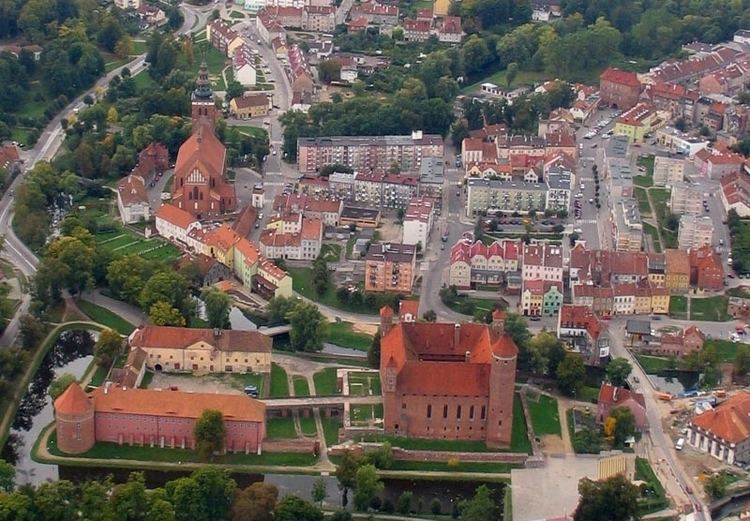Established before 1240 Time zone CET (UTC+1) Population 16,390 (2006) | Town rights 1308 Area 14.34 km² Local time Friday 8:16 AM | |
 | ||
Gmina Lidzbark Warmiński (urban gmina) Weather 5°C, Wind S at 24 km/h, 86% Humidity Points of interest Castle of Warmian Bishops i, Muzeum Warmii i Mazur, Oranżeria Krasickiego, Wysoka Brama | ||
Lidzbark Warmiński [ˈlʲid͡zbarɡ varˈmʲiɲskʲi] (German: Heilsberg ) is a town in the Warmian-Masurian Voivodeship in Poland. It is the capital of Lidzbark County.
Contents
Map of Lidzbark Warmi%C5%84ski, Poland
Lidzbark Warmiński was once the capital of Warmia and formerly its largest city. The city itself was a rich center of faith and culture and was known as the Pearl of Warmia. For a long period of time it was under the control of the Bishops of Warmia and it was also a major economic center, only resigning its importance to the nearby city of Braniewo.
The Warmian Bishop's Castle is considered to be a great artistic and historical value in the world and has been recognised as a historical monument by the Polish government.
History
The town was originally an Old Prussian settlement known as Lecbarg until being conquered in 1240 by the Teutonic Knights, who named it Heilsberg. In 1306 it became the seat for the Bishopric of Warmia (Ermland), and remained the Prince-Bishop's seat for 500 years. In 1309 the settlement received town privileges. After the Second Peace of Thorn (1466) weakened the Teutonic Order and ended its claim to the area, the town was integrated into the Polish province of Royal Prussia.
Nicolaus Copernicus lived at the castle for several years, and it is believed he wrote part of his De revolutionibus orbium coelestium there.
In the winter of 1703-04 the town was the residence of King Charles XII of Sweden during the Great Northern War.
The town was annexed with the rest of the region by the Kingdom of Prussia in the First Partition of Poland in 1772. In 1807 a battle took place near the town between the French under Murat and Soult and the Russians and Prussians under Bennigsen.
From 1933-45 it was the site of the large German government radio station Transmitter Heilsberg. The town was heavily damaged after its conquest by the Soviet Red Army during World War II in 1945. As part of territorial changes promulgated at the Potsdam Conference, the area became part of Poland and its ethnic German population was expelled to the west. The town, as Lidzbark Warmiński, was gradually resettled by Poles, many of them from the parts of eastern Poland annexed by the Soviet Union.
Education
Twin towns – Sister cities
Lidzbark Warmiński is twinned with:
